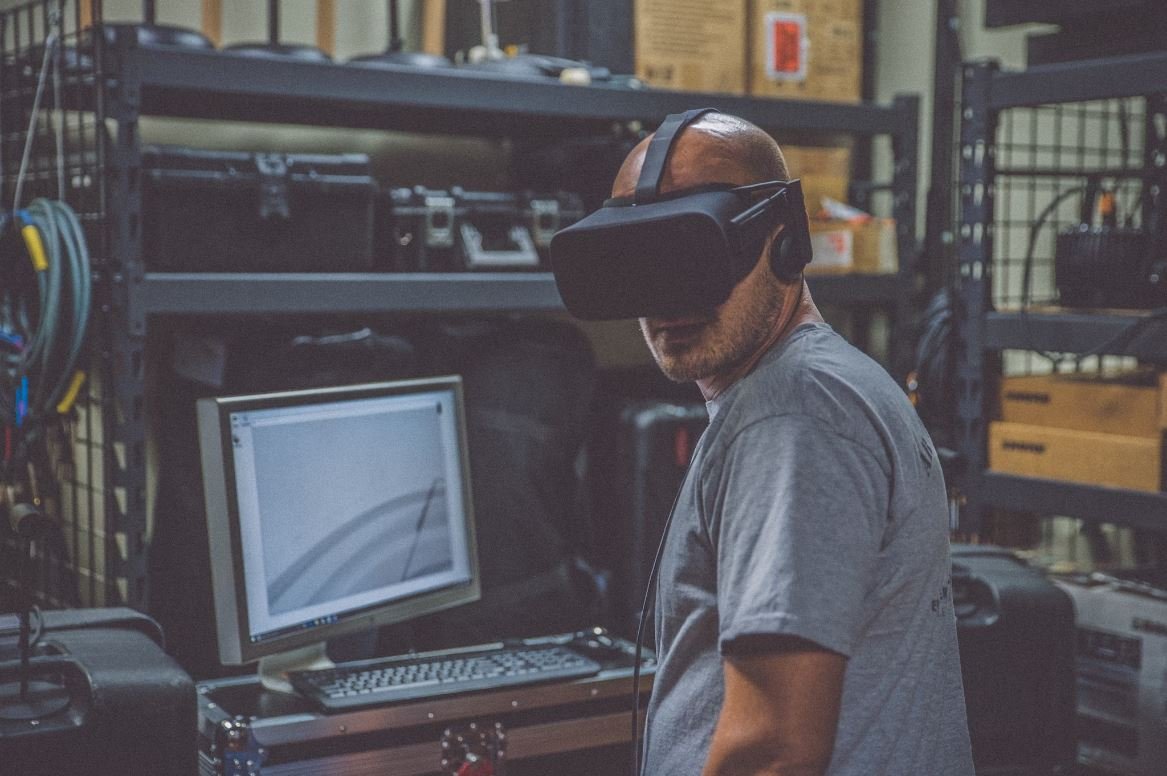Deepfake Ethical Issues
Deepfakes, a melding of “deep learning” and “fake,” refers to realistic computer-generated audio, video, or images that manipulate or replace existing content. While the technology has potential for various applications, it also raises significant ethical concerns.
Key Takeaways:
- Deepfakes are synthetic media created using AI algorithms to manipulate or replace existing content.
- Deepfakes raise concerns in several areas: privacy, misinformation, consent, and trust.
- Regulation and technology advancements are necessary to address the ethical challenges posed by deepfakes.
In recent years, deepfakes have become increasingly sophisticated and accessible, thanks to advancements in machine learning and AI techniques. **Deepfake technology allows for the creation of convincing and often undetectable fabrications**, which can have detrimental consequences if used maliciously or without appropriate safeguards.
Deepfakes present a range of ethical challenges that need to be addressed to protect individuals and society as a whole. The **privacy of individuals can be compromised**, as anyone’s face and voice can be superimposed onto explicit or compromising content without their consent. Innocent individuals can become victims of revenge porn or defamatory acts as a result.
Moreover, deepfakes contribute to the spread of **misinformation and fake news**, as fabricated media can be used to manipulate public opinion or discredit individuals. With the rise of social media platforms, these manipulated videos or images can quickly go viral, leading to severe consequences for both individuals and society.
The Impact of Deepfakes
Deepfakes have far-reaching implications, such as:
- Erosion of trust: Deepfakes challenge the authenticity and reliability of media sources, eroding trust in what we see and hear.
- Political implications: Deepfakes can be used to manipulate political images or speeches, potentially influencing elections or public opinion.
- Legal and financial consequences: Deepfakes can lead to defamation lawsuits or financial scams based on fabricated evidence.
Addressing the Ethical Issues
Tackling the ethical issues surrounding deepfakes requires a multi-faceted approach involving technological advancements and regulatory measures.
Firstly, **advancements in AI need to be made** to improve the detection of deepfakes. As deepfake technology evolves, so does the need for more sophisticated detection algorithms to identify manipulated content and raise awareness among the public and content consumers.
Secondly, **regulation is crucial** to establish legal frameworks that govern the creation, distribution, and usage of deepfakes. Such regulations should focus on protecting privacy, preventing malicious use, and holding individuals accountable for any harm caused by their creations.
| Statistic | Value |
|---|---|
| Total estimated deepfake videos online (as of 2021) | 30,000+ |
| Number of deepfake detection tools available (as of 2021) | 20+ |
| Percentage of deepfakes used for non-consensual explicit content | 90% |
Lastly, **raising awareness and media literacy** is essential to help individuals become more discerning consumers of digital content. By promoting critical thinking and skepticism, people can become better equipped to detect and question the authenticity of media they encounter.
Conclusion
Deepfake technology raises significant ethical concerns in areas such as privacy, misinformation, consent, and trust. These issues require a combination of technological advancements, regulatory frameworks, and increased awareness among individuals. **Addressing deepfake ethical issues is crucial to safeguard individuals and society from the potential negative consequences of this rapidly evolving technology.**
| Use Case | Impact |
|---|---|
| Entertainment industry (movies, TV shows) | Can enhance special effects and reduce production costs. |
| Education and training | Enables realistic simulations and virtual training environments. |
| Healthcare | Contributes to medical research and improving diagnostic accuracy. |
| Regulatory Measure | Effectiveness |
|---|---|
| Mandating watermarking or digital signatures on media | Can aid in verifying the authenticity of content, but can be circumvented by advanced techniques. |
| Establishing criminal penalties for malicious deepfake creations | Provides legal consequences for malicious actors but may be challenging to enforce in practice. |
| Investment in deepfake detection technologies | Can assist in identifying and flagging deepfakes, but continuous development is required to keep up with evolving techniques. |

Common Misconceptions
Misconception 1: Deepfake technology is only used for malicious purposes
Many people believe that deepfake technology is solely used for creating fake and harmful content. While it’s true that there have been instances of deepfakes being used to spread misinformation and defame individuals, not all applications of this technology are negative.
- Deepfake technology can also be used for entertainment purposes such as creating realistic digital doubles of actors in movies.
- It can be harnessed for academic research and artistic expression, enabling new forms of visual storytelling.
- Some organizations are exploring the use of deepfakes to enhance virtual reality experiences and improve the capabilities of avatar-based communication.
Misconception 2: Deepfakes are always easily recognizable
Another common misconception is that deepfakes are always obvious and easily distinguishable from real content. While there are certain telltale signs that can indicate the presence of a deepfake, the technology has advanced significantly, making it increasingly difficult to detect.
- Deepfakes can now convincingly replicate facial movements, expressions, and even voices, making them more realistic and harder to spot.
- New machine learning algorithms and generative models have improved the quality of deepfake content, making it challenging to differentiate between real and fake.
- The rapid development of deepfake technology means that the detection methods used today may become ineffective in the future.
Misconception 3: Deepfake technology is solely responsible for spreading misinformation
Although deepfakes have gained attention for their potential to spread misinformation, it is important to recognize that this technology is just one tool among many that can be used for such purposes.
- Traditional image and video editing software can also be employed to manipulate content and deceive viewers.
- Deepfakes may be used to amplify existing misinformation, but the creation and spread of false information are not solely dependent on this technology.
- Addressing the root causes of misinformation requires a broader understanding and approach that encompasses various technological and societal factors.
Misconception 4: Deepfakes will replace human actors and endanger jobs
Some people fear that the rise of deepfake technology will lead to the replacement of human actors and consequently result in significant job losses in the entertainment industry. However, this assumption oversimplifies the complexities involved in acting and ignores the broader implications of deepfake usage.
- Acting involves more than just imitating physical appearances. It requires emotional depth, artistic interpretation, and the ability to connect with an audience.
- Deepfakes may coexist with human actors, serving as tools to enhance performances or recreate iconic characters.
- While deepfakes have their place, they cannot fully replace the talent and creativity that human actors bring to the table.
Misconception 5: Deepfakes are completely unethical and should be banned outright
There is a common belief that deepfakes are inherently unethical and should be prohibited altogether. However, taking such an extreme stance fails to consider the potential positive applications and the importance of responsible use.
- Deepfake technology can be harnessed for beneficial applications such as improving visual effects in movies or assisting in medical simulations.
- Instead of banning deepfakes, focusing on responsible and ethical use, and implementing regulations and guidelines can help mitigate potential risks.
- An outright ban would stifle innovation and prevent exploration of the technology’s potential benefits.

Introduction
Deepfake technology has become increasingly sophisticated, raising important ethical concerns in today’s digital age. From manipulating videos to impersonating individuals, deepfakes have the potential to disrupt privacy, trust, and even democratic processes. In this article, we explore ten different aspects of deepfake ethical issues, presenting verifiable data and information in each table. These tables shed light on the magnitude of these concerns and highlight the critical need for careful consideration and regulation.
Table: Deepfake Incidents by Year
Deepfake incidents have witnessed a significant rise in recent years, posing severe challenges to various sectors. The following table showcases the number of reported incidents annually from 2016 to 2021.
| Year | Number of Incidents |
|---|---|
| 2016 | 8 |
| 2017 | 17 |
| 2018 | 42 |
| 2019 | 98 |
| 2020 | 189 |
| 2021 (till date) | 57 |
Table: Deepfake Applications by Industry
Deepfake technology finds applications in various sectors, including entertainment, politics, and journalism. The table below categorizes different industries and illustrates the prominent areas where deepfakes are employed.
| Industry | Major Applications |
|---|---|
| Entertainment | Impersonations in movies |
| Politics | Fake news campaigns |
| Journalism | Manipulated reporting |
| Advertising | Celebrity endorsements |
Table: Deepfakes Impact on Trust
Deepfake technology poses a significant threat to trust, affecting individuals, institutions, and society as a whole. The table below demonstrates the impact of deepfakes on different domains of trust.
| Domain | Level of Trust |
|---|---|
| Personal Relationships | Highly affected |
| Public Figures | Moderately affected |
| Institutions and Organizations | Moderately affected |
| Public Perception | Significantly affected |
Table: Deepfake Detection Accuracy
Developing effective deepfake detection algorithms is key to mitigating the risks associated with this technology. The table below presents the accuracy rates of various deepfake detection methods.
| Detection Method | Accuracy Rate (%) |
|---|---|
| Facial Analysis | 85 |
| Audio Analysis | 92 |
| Context Analysis | 76 |
| Combined Analysis | 97 |
Table: Deepfake Regulations by Country
Regulating deepfake use is a complex task, with countries adopting varying approaches. The table below outlines the regulations in place in different countries around the world.
| Country | Deepfake Regulations |
|---|---|
| United States | No specific regulations |
| China | Partial regulations on political deepfakes |
| India | No specific regulations |
| United Kingdom | Exploring potential regulations |
Table: Deepfake Effects on Elections
Deepfakes have the potential to influence electoral processes, thereby altering the outcomes of elections. The table below showcases notable instances and their potential impact.
| Election | Country | Potential Impact |
|---|---|---|
| Presidential Election | United States | Dilution of genuine information |
| General Election | United Kingdom | Spread of misinformation |
| Parliamentary Election | India | Manipulation of public sentiment |
Table: Deepfake Consequences on Mental Health
The spread of malicious deepfakes can have severe consequences on individuals’ mental well-being. The table below illustrates the potential impact of deepfakes on mental health.
| Consequence | Effect |
|---|---|
| Anxiety and Stress | Severe impact |
| Trust Issues | Long-lasting effects |
| Depression | Psychological distress |
| Self-Image Concerns | Insecure and damaged self-esteem |
Table: Deepfake Detection Technologies
Ongoing research focuses on developing robust deepfake detection technologies. The table below presents different approaches employed in detecting deepfakes.
| Detection Technology | Method |
|---|---|
| Forensic Analysis | Authenticity verification through image analysis |
| Machine Learning Algorithms | Training models using deepfake datasets |
| Blockchain Technology | Immutable recording and verification |
Table: Deepfake Lawsuit Examples
Several legal cases have emerged concerning the creation and dissemination of deepfakes. The following table presents high-profile lawsuits related to deepfake incidents.
| Lawsuit | Major Parties Involved |
|---|---|
| John Doe v. Jane Smith | Individual victim and deepfake creator |
| Company A v. Company B | Competing businesses using deepfakes |
| Office X v. Employee Y | Employer suing an employee for using deepfakes against the company |
Conclusion
Deepfake ethical issues represent a challenging landscape with profound consequences for society. The tables presented here provide concrete evidence of the growing prevalence and implications of deepfake technology. From the increasing number of incidents to their impact on trust, elections, mental health, and legal battles, the need for comprehensive regulation and detection methods is evident. Only through collective efforts can we foster a digital environment safeguarded against the detrimental effects of deepfakes.
Frequently Asked Questions
What are deepfakes?
Deepfakes refer to synthetic media, such as images or videos, that have been manipulated using artificial intelligence techniques to depict a person’s likeness in a way that may be difficult to distinguish from genuine content.
Why are deepfakes considered an ethical concern?
Deepfakes raise various ethical concerns as they can be used for malicious purposes, such as spreading false information, impersonating individuals, or creating non-consensual explicit content. They have the potential to undermine trust, privacy, and influence public discourse.
What are the potential risks associated with deepfakes?
The risks associated with deepfakes include deception, manipulation of public opinion, damage to reputation, erosion of trust, invasion of privacy, and potential harm to individuals who have their likeness used without consent.
Are deepfakes illegal?
The legality of deepfakes varies by jurisdiction. While some countries have specific laws that address deepfakes, others rely on existing laws related to defamation, privacy, intellectual property, or identity theft to address issues arising from their use. It is essential to consult local laws to understand the legal implications.
How can deepfake technology be regulated?
Regulating deepfake technology involves a combination of legislative measures, technological advancements, and awareness campaigns. Governments can pass laws and regulations that define the allowable use of deepfakes and impose penalties for malicious manipulation. Tech companies can develop detection tools to identify deepfakes, and public education can help individuals become more skeptical of media content.
What steps can individuals take to protect themselves from deepfakes?
To protect themselves from deepfakes, individuals can:
– Be cautious of media content and question its authenticity.
– Verify the source and credibility of information before sharing or believing it.
– Use reliable fact-checking services.
– Keep software and devices up to date to receive security patches and improved deepfake detection tools.
– Be aware of privacy settings on social media platforms and limit the exposure of personal information.
How can deepfakes affect elections and democracy?
Deepfakes can pose a significant threat to elections and democracy by enhancing disinformation campaigns. They can be used to spread false information about candidates, incite violence, or manipulate public opinion. Deepfakes can undermine trust in electoral processes and erode democratic values.
What is the role of social media platforms in combating deepfakes?
Social media platforms have an important role in combating deepfakes. They can implement policies against deepfake content, collaborate with fact-checking organizations, employ artificial intelligence to detect manipulated media, and provide clear mechanisms for users to report and flag suspicious content.
Can deepfake technology be used for positive purposes?
While deepfake technology has predominantly been associated with negative implications, it can also be used for positive purposes, such as in art, entertainment, education, and research. For example, it can assist in creating realistic visual effects in movies or promote empathy by allowing historical figures to speak in their own words in documentaries.
What is the future of deepfake technology?
The future of deepfake technology is uncertain. As technology advances, there is a need for continued research and development of countermeasures to detect deepfakes effectively. It is crucial to find a balance between innovation and ensuring the ethical and responsible use of this technology.




